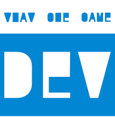https://cdn.discordapp.com/attachments/642116703114887201/681992847569977354/unknown.png
This is one step closer than the previous box that Joe very politely outlined. The code for it is as such:
void DrawFace(ID3D11Device* pDevice, ID3D11DeviceContext* pDevCon,
int nFace)
{
struct Vertex //Overloaded Vertex Structure
{
Vertex(){}
Vertex(float x, float y, float z,
float u, float v)
: pos(x, y, z), texCoord(u, v){}
XMFLOAT3 pos;
XMFLOAT2 texCoord;
};
ID3D11Buffer* squareIndexBuffer;
ID3D11DepthStencilView* depthStencilView;
ID3D11Texture2D* depthStencilBuffer;
ID3D11Buffer* squareVertBuffer;
/*
OLD DX9 CODE ---
pDevice->SetRenderState(D3DRS_CULLMODE, D3DCULL_CW);
pDevice->SetTextureStageState(0, D3DTSS_COLOROP, D3DTOP_SELECTARG2);
pDevice->SetTextureStageState(0, D3DTSS_COLORARG1, D3DTA_DIFFUSE);
pDevice->SetTextureStageState(0, D3DTSS_COLORARG2, D3DTA_TEXTURE);
pDevice->SetRenderState(D3DRS_LIGHTING, TRUE);
pDevice->SetRenderState(D3DRS_ALPHABLENDENABLE, FALSE);*/
// pDevice->SetIndices(m_pIB);
// pDevice->SetStreamSource(0, m_pVB, 0, sizeof(stBSPVertex));
// pDevice->SetFVF(m_FVF_Format);
// If its not a tri mesh
/* if (m_pFaces[nFace].nFaceType != 1)return;
int nFirstF = m_pFaces[nFace].nFirstMeshVerts;
int nNumF = m_pFaces[nFace].NumMeshVerts;
int nFirstV = m_pFaces[nFace].FirstVert;
int nNumV = m_pFaces[nFace].NumVerts;
int nTexIndex = m_pFaces[nFace].nTexture;*/
// pDevice->SetTexture(0, m_pT[nTexIndex]);
/*
pDevice->DrawIndexedPrimitive( D3DPT_TRIANGLELIST, // Type
nFirstV, // BaseVertexIndex
0, // MinIndex
nNumV, // NumVertices
nFirstF, // StartIndex
nNumTris ); // PrimitiveCount
*/
m_nNumTrisDraw += (m_pFaces[nFace].NumMeshVerts / 3);
stBSPVertex pVB[10000];
/* pDevice->DrawIndexedPrimitive(D3DPT_TRIANGLELIST,
m_pFaces[nFace].FirstVert,
0,
m_pFaces[nFace].NumVerts,
m_pFaces[nFace].nFirstMeshVerts,
(m_pFaces[nFace].NumMeshVerts / 3));
--END OF OLD DX9 CODE--
*/
Vertex v2[10000];
for (int i = 0; i < m_nNumVerts; i++)
{
// The put the y ans z the wrong way around!
pVB[i].p.x = m_pVerts[i].vPoint[0];
pVB[i].p.y = m_pVerts[i].vPoint[1];
pVB[i].p.z = m_pVerts[i].vPoint[2];
// tv is inverted!
pVB[i].tu1 = m_pVerts[i].Tex[0];
pVB[i].tv1 = m_pVerts[i].Tex[1];
pVB[i].lu2 = m_pVerts[i].LightTexCoord[0];
pVB[i].lv2 = m_pVerts[i].LightTexCoord[1];
pVB[i].n.x = m_pVerts[i].vNormal[0];
pVB[i].n.y = m_pVerts[i].vNormal[1];
pVB[i].n.z = m_pVerts[i].vNormal[2];
// Alpha hack - so our alpha value isn't 100% anymore
pVB[i].colour = 0x10ffffff & m_pVerts->RGBA; // ARGB*/
}
for (int i = 0; i < m_nNumVerts; i++)
{
// The put the y ans z the wrong way around!
v2[i] = Vertex(pVB[i].p.x, pVB[i].p.y, pVB[i].p.z, pVB[i].tu1, pVB[i].tv1);
}
WORD pIB[10000];
/*m_pIB->Lock(0,
m_nNumMeshIndices*sizeof(WORD),
(void**)&pIB,
0);*/ //THIS IS OLD DX9 CODE FOR INDEX BUFFER
//below is me filling the new buffer in
for (int i = 0; i < m_nNumMeshIndices; i++)
pIB[i] = m_pMeshIndices[i];
D3D11_BUFFER_DESC indexBufferDesc;
ZeroMemory(&indexBufferDesc, sizeof(indexBufferDesc));
indexBufferDesc.Usage = D3D11_USAGE_DEFAULT;
indexBufferDesc.ByteWidth = sizeof(WORD)* m_nNumMeshIndices;
indexBufferDesc.BindFlags = D3D11_BIND_INDEX_BUFFER;
indexBufferDesc.CPUAccessFlags = 0;
indexBufferDesc.MiscFlags = 0;
D3D11_SUBRESOURCE_DATA iinitData;
iinitData.pSysMem = pIB;
pDevice->CreateBuffer(&indexBufferDesc, &iinitData, &squareIndexBuffer);
pDevCon->IASetIndexBuffer(squareIndexBuffer, DXGI_FORMAT_R32_UINT, 0);
D3D11_BUFFER_DESC vertexBufferDesc;
ZeroMemory(&vertexBufferDesc, sizeof(vertexBufferDesc));
vertexBufferDesc.Usage = D3D11_USAGE_DEFAULT;
vertexBufferDesc.ByteWidth = sizeof(Vertex)* m_nNumVerts;
vertexBufferDesc.BindFlags = D3D11_BIND_VERTEX_BUFFER;
vertexBufferDesc.CPUAccessFlags = 0;
vertexBufferDesc.MiscFlags = 0;
D3D11_SUBRESOURCE_DATA vertexBufferData;
ZeroMemory(&vertexBufferData, sizeof(vertexBufferData));
vertexBufferData.pSysMem = v2;
pDevice->CreateBuffer(&vertexBufferDesc, &vertexBufferData, &squareVertBuffer);
//Set the vertex buffer
UINT stride = sizeof(Vertex);
UINT offset = 0;
pDevCon->IASetVertexBuffers(0, 1, &squareVertBuffer, &stride, &offset);
pDevCon->IASetPrimitiveTopology(D3D11_PRIMITIVE_TOPOLOGY_TRIANGLELIST);
for (int i = 0; i<m_nNumFaces; i++)
{
// If its not a tri mesh
if (m_pFaces[i].nFaceType != 1) continue;
int nFirstF = m_pFaces[i].nFirstMeshVerts;
int nNumF = m_pFaces[i].NumMeshVerts;
int nFirstV = m_pFaces[i].FirstVert;
int nNumV = m_pFaces[i].NumVerts;
int nTexIndex = m_pFaces[i].nTexture;
#if(0)
pDevice->SetTexture(0,
m_pT[nTexIndex]);
#endif
int nNumTris = nNumF / 3;
m_nNumTrisDraw += nNumTris;
/* pDevice->DrawIndexedPrimitive(D3DPT_TRIANGLELIST, // Type
nFirstV, // BaseVertexIndex
0, // MinIndex
nNumV, // NumVertices
nFirstF, // StartIndex
nNumTris); // PrimitiveCount*/
pDevCon->Draw(m_nNumTrisDraw, m_pFaces[i].FirstVert); //THIS is what draws the “improved” cube
}
}
This is as close as I can get it – There are one of two issues going on here, either:
a) The index buffer is not being filled properly( I am literally doing it in the same manner it was done in DX9, that for loop was also used)
b) I am using Draw calls incorrectly.
I have, however, found a BSP parses in DX11, and it uses the Draw function:
m_pD3D->GetDeviceContext()->Draw(visibleFaces[i]->numVertices, 0);
Which is in a loop just like my Draw call is.
The old code in this header for the index/vertex buffers in D3D9 are as follows:
bool CreateDXIndexBuffer(IDirect3DDevice * pDevice)
{
HRESULT hr = S_OK;
hr =
pDevice->CreateIndexBuffer(m_nNumMeshIndices * sizeof(WORD),
D3DUSAGE_WRITEONLY,
D3DFMT_INDEX16,
D3DPOOL_DEFAULT,
&m_pIB,
NULL);
if (hr != S_OK)
{
ErrLog("<!>Error Creating Index Buffer/n");
return false;
}
// We need to copy the data one at a time, as the data is loaded
// in as int, but directx uses a word for each indices
WORD * pIB;
m_pIB->Lock(0,
m_nNumMeshIndices*sizeof(WORD),
(void**)&pIB,
0);
for (int i = 0; i<m_nNumMeshIndices; i++)
pIB[i] = m_pMeshIndices[i];
m_pIB->Unlock();
return true;
}
bool CreateDXVertexBuffer(IDirect3DDevice * pDevice)
{
HRESULT hr = S_OK;
m_FVF_Format = D3DFVF_XYZ |
D3DFVF_NORMAL |
D3DFVF_DIFFUSE |
D3DFVF_TEX2 |
D3DFVF_TEXCOORDSIZE2(0) |
D3DFVF_TEXCOORDSIZE2(1);
hr =
pDevice->CreateVertexBuffer(m_nNumVerts * sizeof(stBSPVertex),
0,
m_FVF_Format,
D3DPOOL_MANAGED,
&m_pVB,
NULL);
if (hr != S_OK)
{
ErrLog("<!>Error Creating Vertex Buffer/n");
return false;
}
// Copy data into our dx buffer
stBSPVertex *pVB;
m_pVB->Lock(0, 0, (void**)&pVB, 0);
for (int i = 0; i<m_nNumVerts; i++)
{
// The put the y ans z the wrong way around!
pVB[i].p.x = m_pVerts[i].vPoint[0];
pVB[i].p.y = m_pVerts[i].vPoint[1];
pVB[i].p.z = m_pVerts[i].vPoint[2];
// tv is inverted!
pVB[i].tu1 = m_pVerts[i].Tex[0];
pVB[i].tv1 = m_pVerts[i].Tex[1];
pVB[i].lu2 = m_pVerts[i].LightTexCoord[0];
pVB[i].lv2 = m_pVerts[i].LightTexCoord[1];
pVB[i].n.x = m_pVerts[i].vNormal[0];
pVB[i].n.y = m_pVerts[i].vNormal[1];
pVB[i].n.z = m_pVerts[i].vNormal[2];
// Alpha hack - so our alpha value isn't 100% anymore
pVB[i].colour = 0x10ffffff & m_pVerts->RGBA; // ARGB
}
m_pVB->Unlock();
return true;
}
So which is it? Is the index buffer screwed up, filled with the wrong indices as Joe suggests? Or am I drawing incorrectly?
Thank you ALL for your help and support up to this point. The employee from Microsoft and the DirectX dev's from DX12's team said for me not to worry and that I could continue with D3D9, but I refuse to continue unless I under 100% of the code I use, otherwise I'm a hypocrite.
Again, thanks for all your help!






